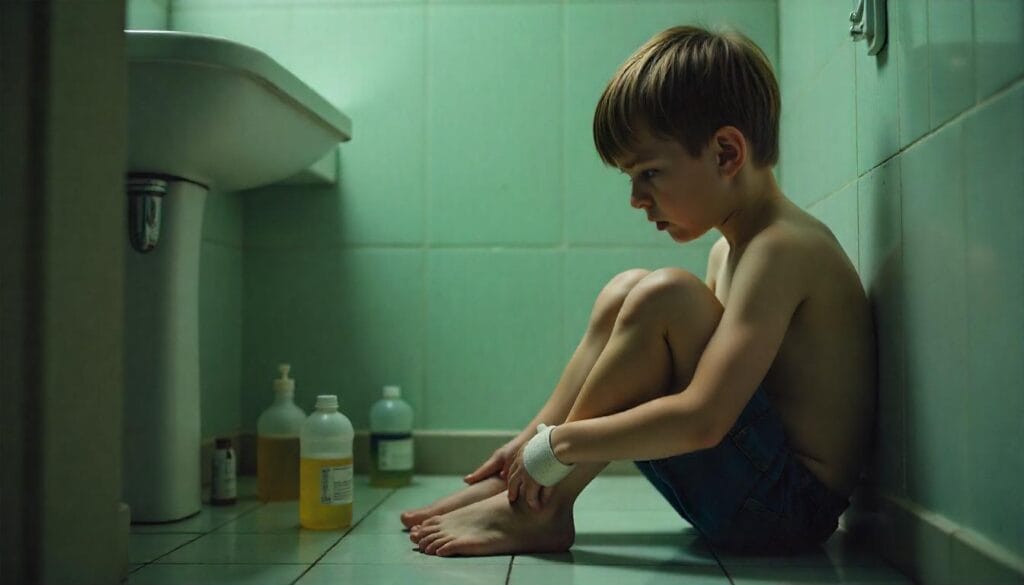Last updated January 01, 2025
Self-harm behavior is a common and serious issue in children having developmental disorders like autism spectrum disorder (ASD).
These behaviors include head banging, skin picking, biting, and other forms of intentional self-harm that can have different short-term and long-term consequences. Usually, Self-harming behaviors in autistic children begin in early childhood and can even continue through adulthood.
The NSSI (non-suicidal self-injury) behaviors are often the result of poor impulse control, an attempt to “feel” something, regulating emotions, or being used as a form of self-punishment.
Now, It is important to understand the root causes of the behaviors to minimize the self-injuries. it may vary in different conditions and once the potential triggers are identified, effective treatment can be tailored to minimize or control the situations.
Form of Self-Harm behavior & Injurious activities in Autistic Children
The most common forms of self-harm behavior in autism include:
- Head banging
- Head hitting
- Biting
- Scratching, rubbing, or picking at skin.
It is observed that Hair pulling, vomiting, and pica (eating non-edible things such as dirt) are additional forms of self-harm in autistic children. Children who engage in these activities are not generally suicidal. Rather, they seek a type of release through these behaviors, use them as a form of communication, or use them to regulate their emotions.

Self-Harm Behavior Begining Age
Self-harm behaviors have no age bar. Babies and toddlers may bang their heads against the wall or hit their heads when frustrated. As communication skills improve, NSSI behaviors are usually outgrown. Due to communication issues in Autistic children, SIB behaviors may persist.
Most of the studies have different findings for autistic adults reporting NSSI behaviors, the average age at which they began harming themselves was 15 years old. In a recent study, it was found that over 50% of autistic children between the ages of 2 and 7 reported SIB, and close to 40% of adolescents are engaged in these behaviors.
These studies indicate that self-harming behaviors are common in autistic over a range of ages with differing levels of autism severity.
Self-Harm behavior statistics
An average Between 20% and 30% of people with autism engage in self-harming behaviors. These behaviors can range from mild to severe.
In most cases, self-harming behavior begins in childhood and adolescence. 1 out of 4 autistic children engages in some form of self-injury.
What is self-harm?
Self-harm means a person harms himself to deal with very difficult feelings, painful memories, or overwhelming situations and experiences.
The possible cause of self-harm behavior
There are a variety of reasons that autistic children engage in self-harming behaviors. They may use it as:
- A method of expression or social communication.
- divert emotional pain into physical pain
- to show invisible thoughts or feelings in a visible
- reduce overwhelming emotional feelings or thoughts.
- escape from traumatic memories
- An attempt to regulate emotions.
- stop feeling numb, disconnected, or dissociated (see dissociation and dissociative disorders)
- punish themselves for their feelings and experiences.
After self-harming they may feel a short-term sense of release, but the cause of their distress never goes away instead it may bring up very difficult emotions and make them feel worse.
Self-harming behaviors are often the result of low self-esteem, an inability to communicate effectively, and poor coping skills. They can also be used as a way to affect outcomes. Self-injurious behavior in autistic children is also linked to poor impulse control.
What Are the Risk Factors for SIB
The risk factors traits for self-harming behaviors in autistic children can include:
- Aggression and belligerence.
- Sleep issues.
- Anxiety.
- Hyperactivity and inability to sit still
- Mood problems or disorders.

Certain environmental issues can increase further the risk that a child will engage in self-harming activities.
Addressing Injury & Self-Harm
Self-harming behavior is usually seen by physical evidence, such as bruising, cuts and scratches, bite marks, hair loss, etc.
Parents of autistic children frequently witness self-harming behaviors. These behaviors go beyond typical activities of autism such as hand flapping and repetitive behaviors of autism. Sometimes it becomes injurious and comes with serious consequences.
And you can’t effectively curb these self-harming behaviors until you identify the causes. For example, lack of stimulation in autistic children may lead to self-harming behaviors. And keeping these children busy, may result in a decrease in SIB.
Sometimes communication inability translates to self-harming behavior. in this case, applied behavior analysis(ABA) can improve verbal and nonverbal communication, which makes them feel less frustrated.
Effective Self-Harm Management & Treatments
Children with autism who are receiving treatment are assisted in comprehending their feelings and actions. Therapy helps children to learn how to control their emotions and impulses and also boosts their self-confidence and self-esteem.
When it comes to treating self-harming behaviors in autistic children, there are three primary interventions:
- Pharmaceuticals
- psychiatric strategies, and
- supplementary techniques that include dietary changes and increased physical activity.
Usually, multiple strategies are employed at once to stop these behaviors and coping mechanisms for handling emotions.
Medications are used to address particular medical symptoms or disorders affecting the mind. They are either employed as a last resort or in conjunction with other therapeutic techniques due to their possible negative effects.
When treating autism with SIB, therapies, and behavioral interventions are most beneficial.
You may try below mentioned behavioral treatments to reduce self-harming behaviors:
- by changing the environment, rearranging schedules and routines, and increasing or decreasing stimulation.
- Reinforce positive behaviors by introducing new “replacement” skills or activities that can be used instead of self-harming activities.
- You can eliminate the reinforcement of self-harming behaviors by ignoring them. If your child is acting in this way to get attention from others, resist their demands.
- Learn new strategies to cope with stressful situations, communicate effectively, and control the emotions that cause these outbursts by utilizing ABA therapy and occupational therapy.
- Boost your child’s self-esteem by encouraging their independence and helping them develop new skills.
